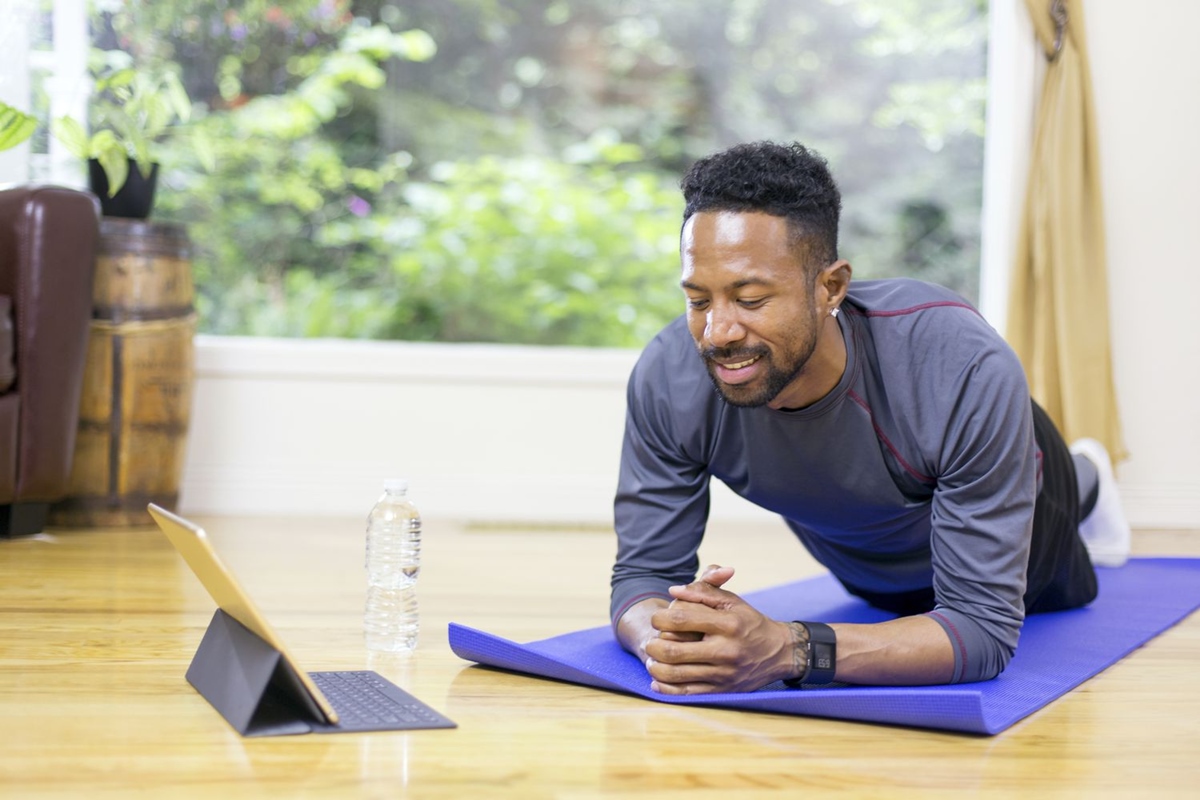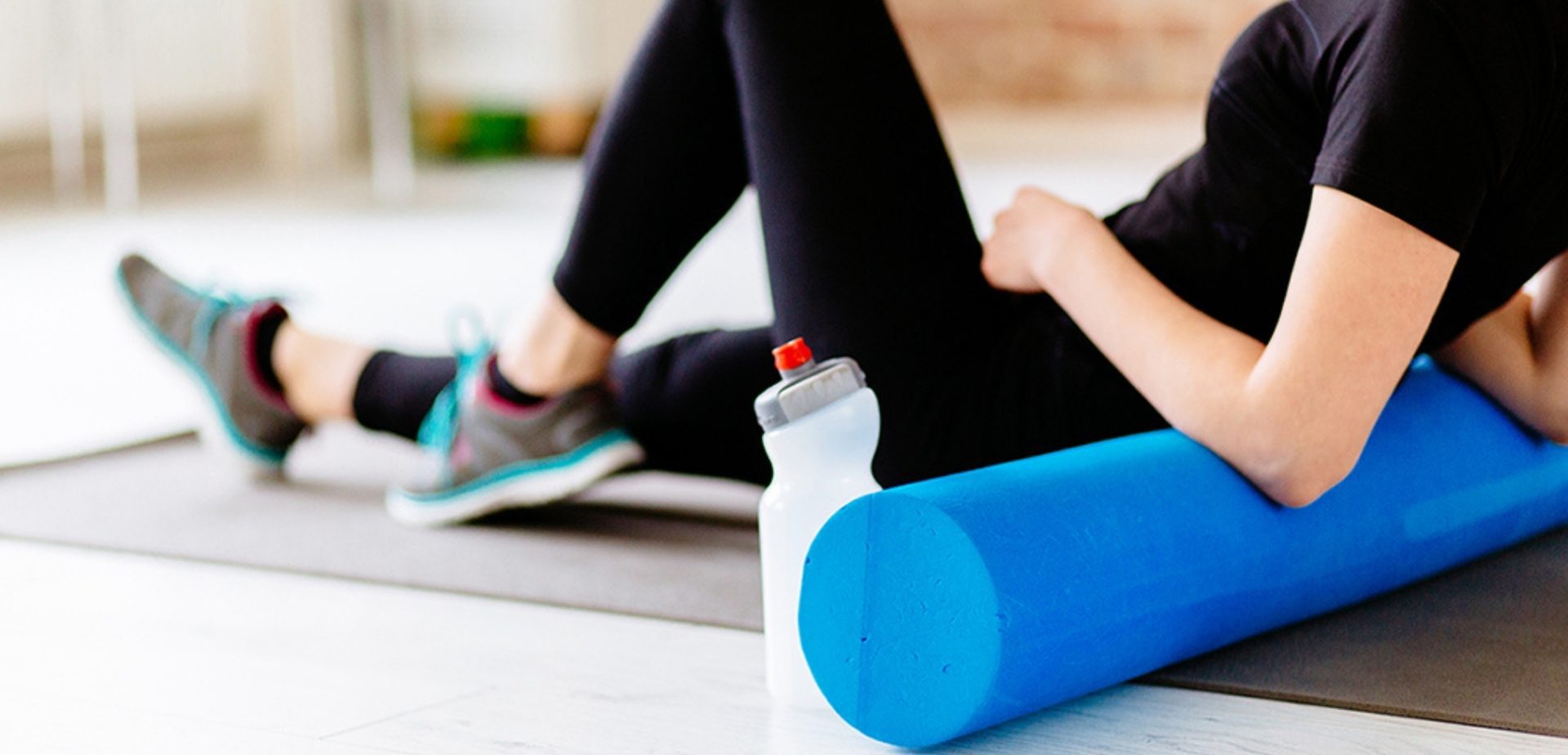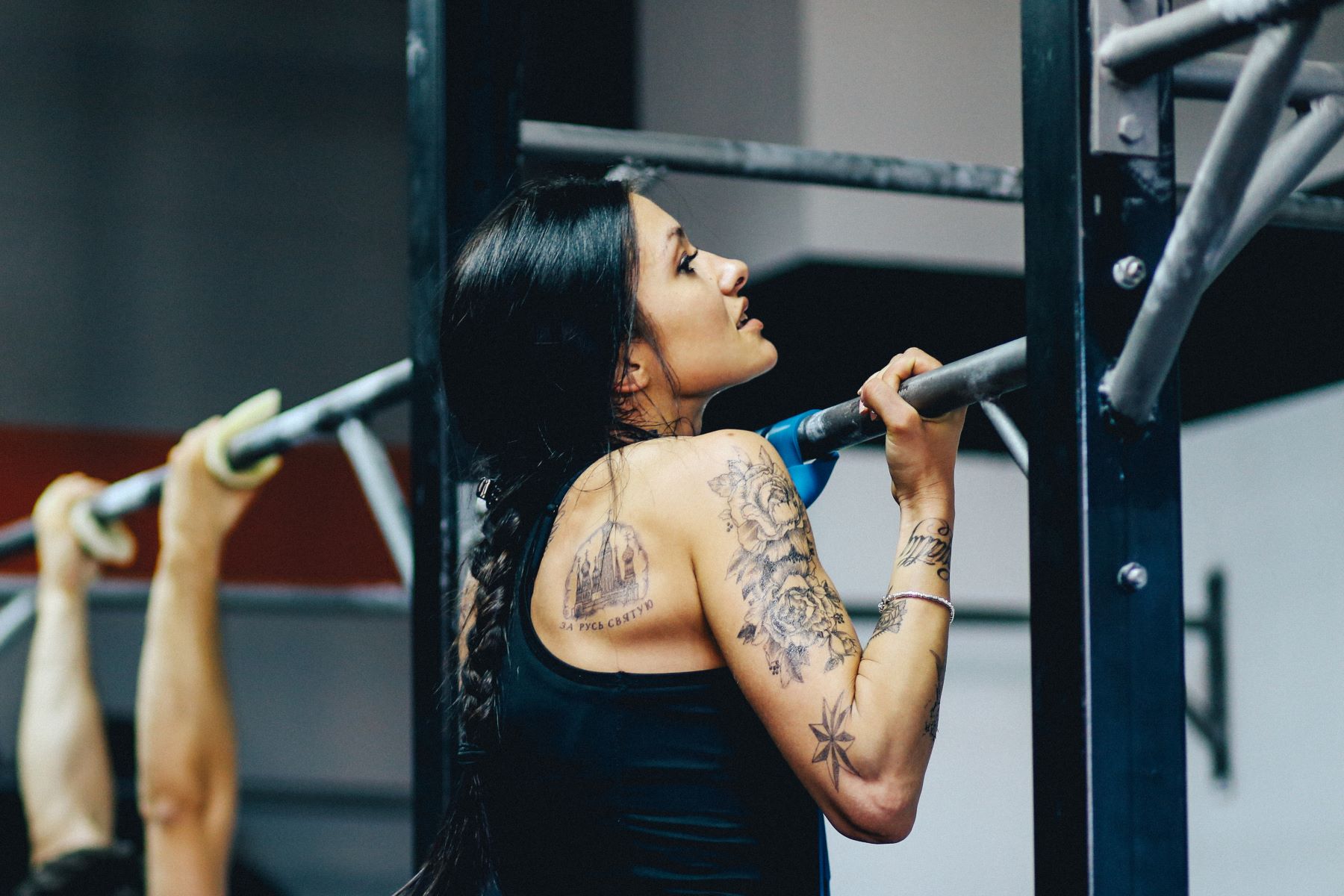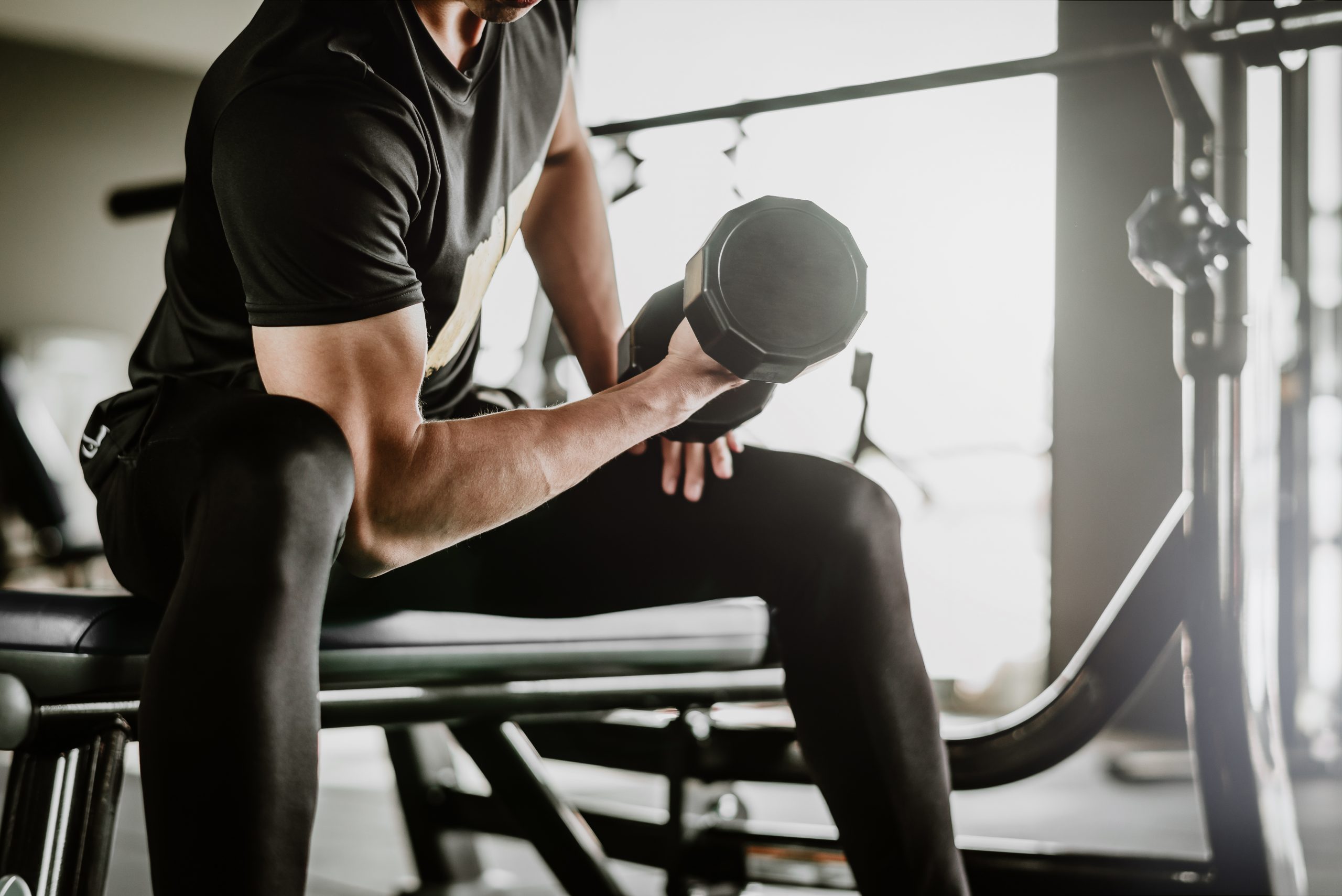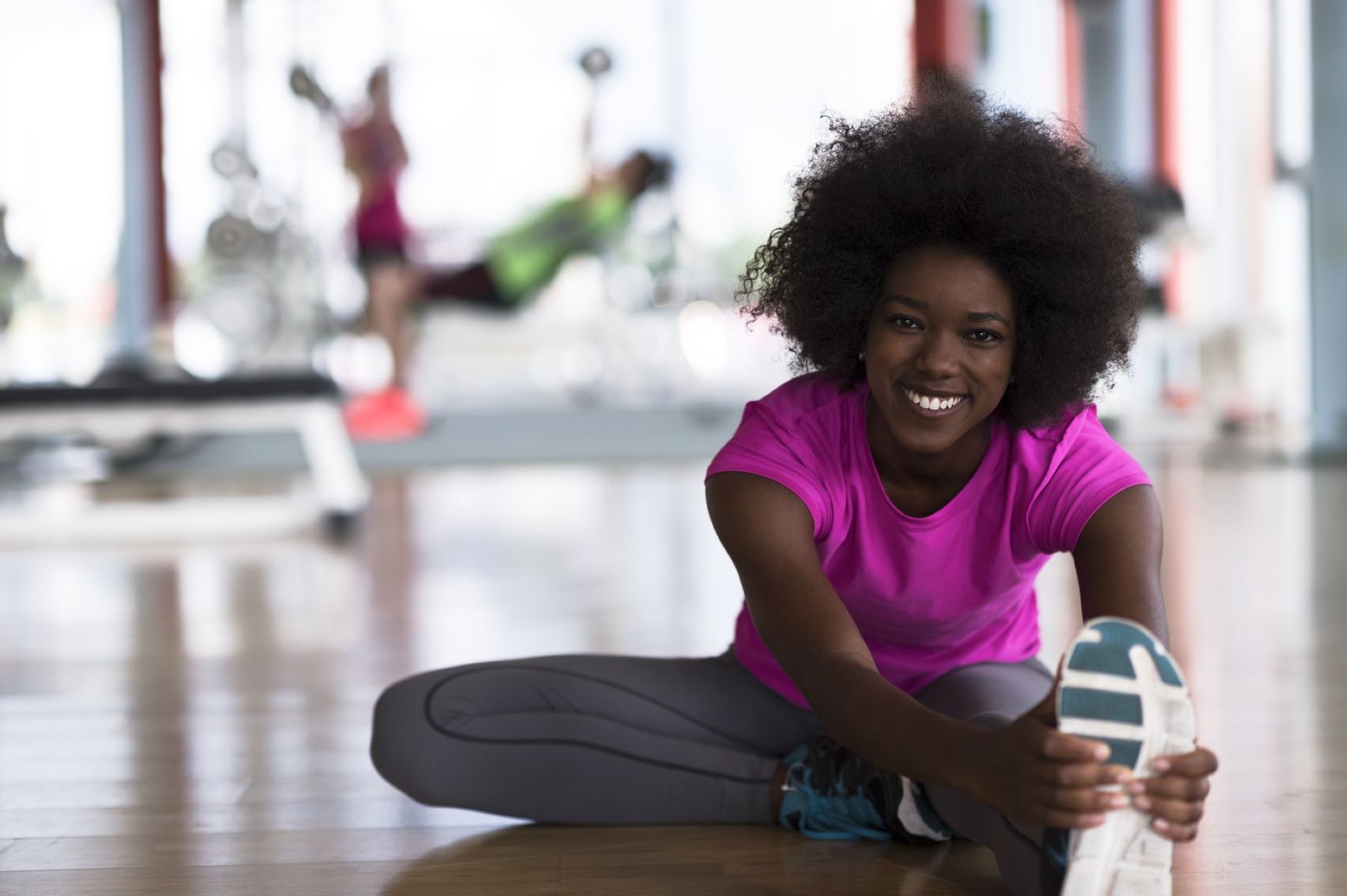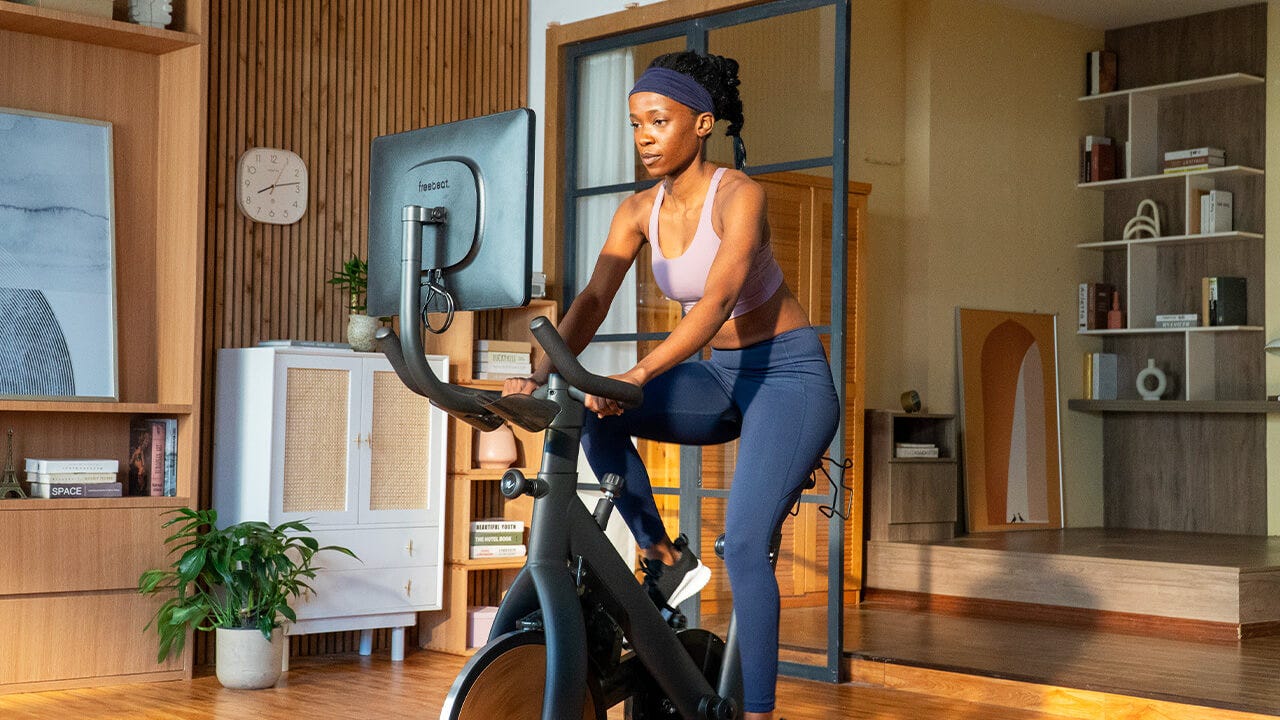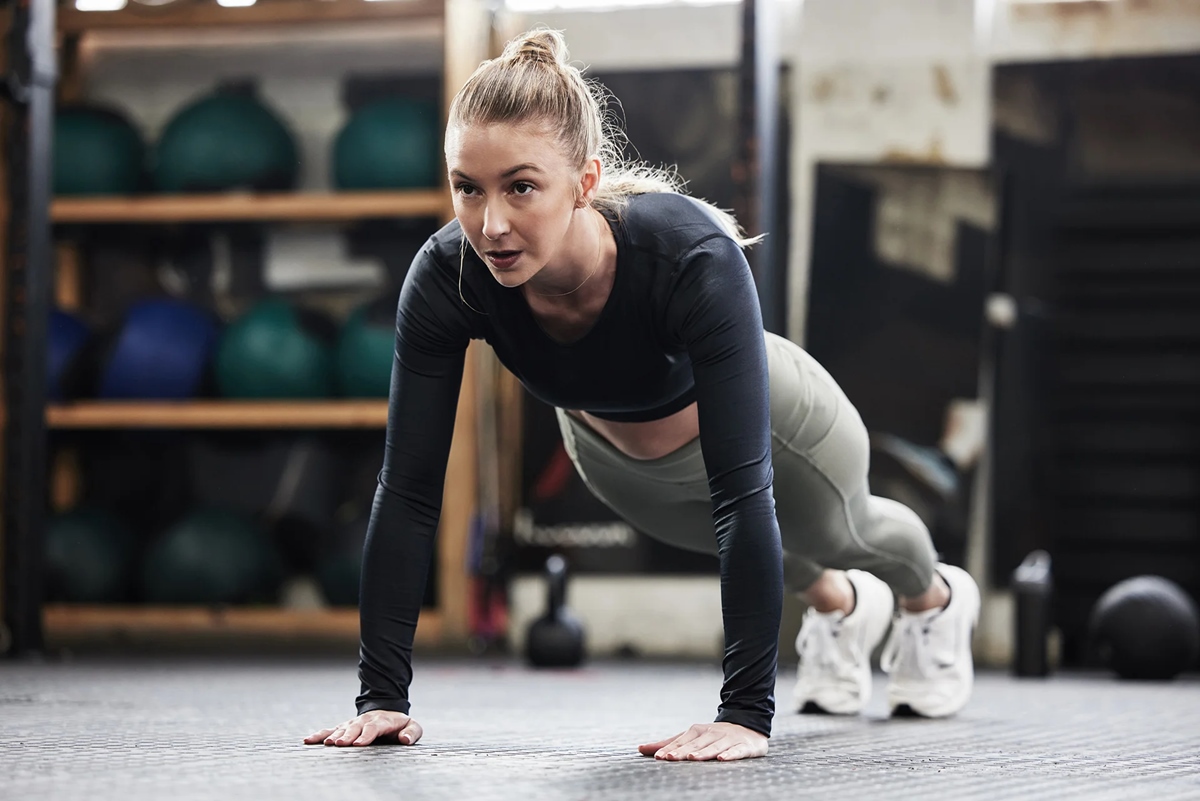Home>Misc>Featured>How Soon Can You Exercise After Getting A Botox
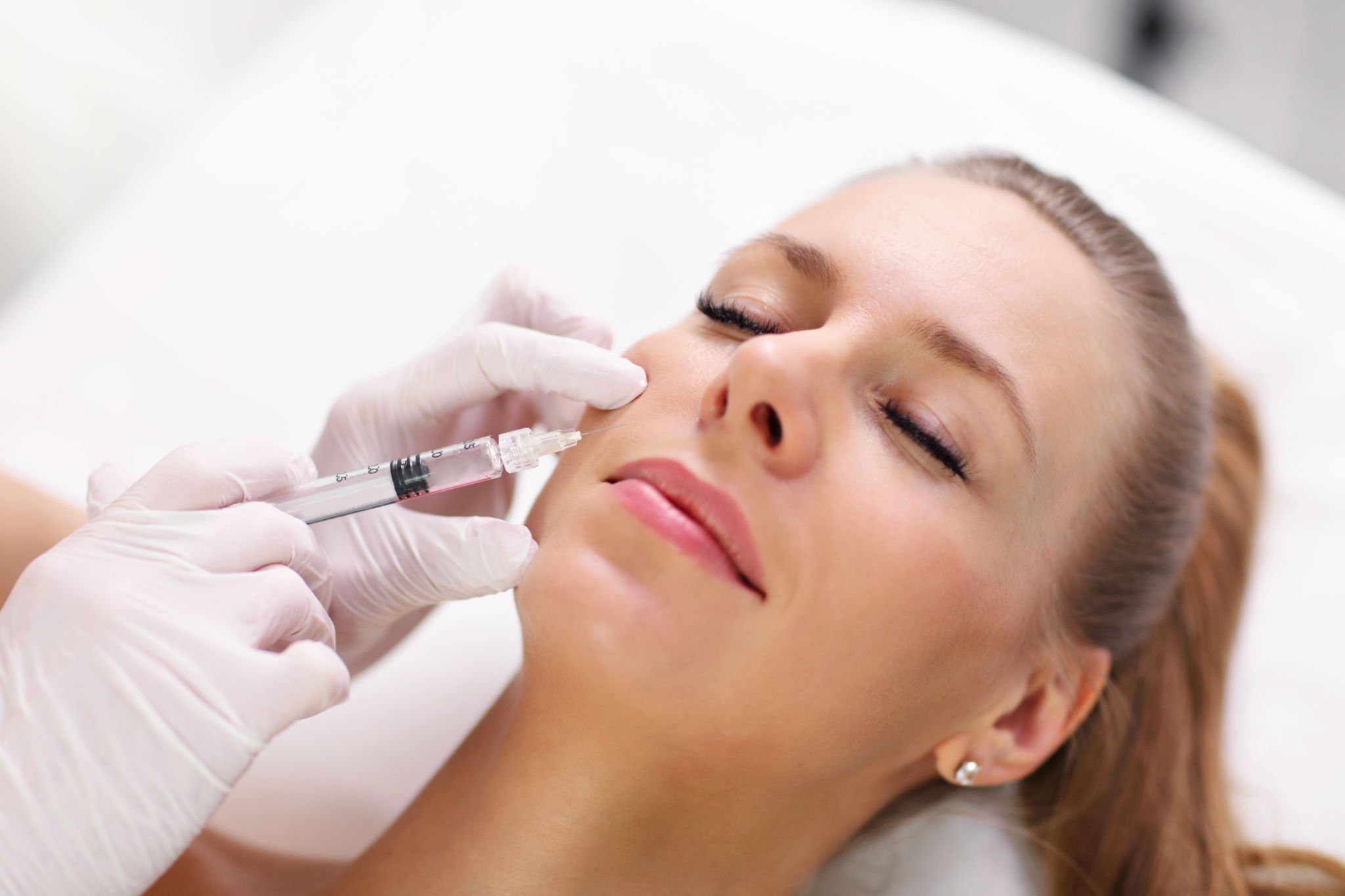

Featured
How Soon Can You Exercise After Getting A Botox
Published: August 12, 2023
Discover when it is safe to exercise after receiving a Botox treatment. Featured in-depth guide with expert advice and precautions to ensure optimal results.
Introduction
Welcome to the world of Botox! If you’ve recently had a Botox treatment, you may be wondering when you can resume your exercise routine. We understand that staying active is important to you, but it’s crucial to take certain precautions after receiving Botox injections. This article will provide you with the information you need to know about exercising after getting Botox, including the recommended waiting period and guidelines for a safe workout.
Before we dive into the details, let’s briefly go over what Botox is and its effects on the body. Botox, short for botulinum toxin, is a neurotoxin that is injected into specific muscles to temporarily paralyze them. It is commonly used to reduce the appearance of wrinkles, crow’s feet, and other signs of aging. Botox works by blocking the nerve signals to the muscles, resulting in a temporary relaxation of the targeted area.
When it comes to exercising after Botox, there are a few factors to consider. The first factor is the waiting period. It is important to wait a certain amount of time after the Botox treatment to allow the toxin to settle and fully take effect. Exercising too soon after the injections can potentially interfere with the desired results and increase the risk of complications.
Another factor to consider is the type of exercise you plan to engage in. High-impact activities that involve intense facial movements, such as running or jumping, can place stress on the injected areas and potentially disrupt the distribution of the toxin. It is important to tailor your exercise routine to minimize strain on the treated muscles.
To ensure a safe and effective workout after getting Botox, it is essential to follow the recommended waiting period and guidelines. These protocols may vary depending on the individual and the specific instructions given by your healthcare provider. Let’s explore these recommendations in more detail and learn how to exercise safely after receiving Botox injections.
Understanding Botox and its Effects on the Body
Before we delve into the topic of exercising after Botox, it’s important to have a solid understanding of how Botox works and its effects on the body. Botox, or botulinum toxin, is a neurotoxic protein that is derived from the bacterium Clostridium botulinum. It is commonly used for cosmetic purposes to reduce the appearance of wrinkles and fine lines.
When Botox is injected into the muscles, it blocks the nerve signals that control muscle contractions. This prevents the muscles from contracting and allows them to relax. By temporarily relaxing the muscles, Botox helps to smooth out wrinkles and create a more youthful appearance.
Botox injections are typically performed by trained medical professionals, such as dermatologists or plastic surgeons. The procedure involves using a fine needle to inject small amounts of Botox into specific muscles. The number of injections required and the dosage used can vary depending on the individual and the desired outcome.
The effects of Botox are not immediate. It takes time for the Botox to bind to the nerve endings and block the release of acetylcholine, a chemical that stimulates muscle contractions. Most people start to see the effects of Botox within a few days, and the full results are usually visible within one to two weeks.
The duration of the Botox effects can vary from person to person. On average, the effects last between three to six months. As the Botox wears off, the muscles gradually regain their ability to contract, and the wrinkles may reappear. To maintain the results, regular Botox treatments are often recommended.
It’s important to note that Botox is not just used for cosmetic purposes. It is also used to treat a variety of medical conditions, including chronic migraines, excessive sweating, muscle spasms, and overactive bladder. In these cases, Botox works by blocking the release of certain chemicals that contribute to the symptoms of these conditions.
Now that we have a better understanding of how Botox works and its effects on the body, let’s move on to discussing the factors to consider before exercising after receiving Botox injections.
Factors to Consider Before Exercising After Botox
Exercising is an essential part of staying healthy and maintaining a balanced lifestyle. However, when it comes to exercise after receiving Botox injections, there are some important factors to consider. These factors will help ensure a smooth recovery and the best possible outcome from your Botox treatment.
One of the key factors to consider is the waiting period after receiving Botox. It is generally recommended to wait at least 24 hours before engaging in any vigorous physical activity. This waiting period allows the Botox to settle into the targeted muscles and reduces the risk of complications.
Additionally, the type of exercise you plan to engage in should be taken into account. High-impact activities and exercises that involve intense facial movements, such as running, weightlifting, or yoga poses that put pressure on the face, should be avoided in the first 24 hours. These activities can potentially disrupt the distribution of the Botox and affect the desired results.
An important consideration is the specific areas that were treated with Botox. If you received injections in the forehead, it is advisable to avoid exercises that require a lot of facial movement or put pressure on the forehead muscles, such as jumping jacks or heavy weight lifting. Similarly, if you had Botox injections around the eyes or in the eyebrow area, it is best to avoid exercises that involve excessive eye rubbing or squinting.
Individual differences may also play a role in the recovery process. Some people may experience more sensitivity or swelling after Botox injections, which may require a longer recovery period before resuming exercise. It is essential to listen to your body and consult with your healthcare provider to determine the appropriate waiting period based on your specific circumstances.
Furthermore, factors such as overall physical health, fitness level, and any pre-existing medical conditions should be taken into consideration before exercising after Botox. If you have any concerns or doubts about how your body will respond to exercise post-Botox, it is best to consult with your healthcare provider before engaging in any physical activity.
By considering these various factors, you can ensure a safe and effective recovery after receiving Botox injections. In the next section, we will discuss the recommended waiting period before exercising after Botox.
The Recommended Waiting Period Before Exercising Post-Botox
After receiving Botox injections, it is crucial to allow for an adequate waiting period before engaging in any strenuous physical activity. The recommended waiting period can vary depending on the individual and the specific instructions given by your healthcare provider. However, there are some general guidelines to consider.
Typically, it is advisable to wait at least 24 hours before resuming any vigorous exercise after receiving Botox. This waiting period allows the Botox to fully settle into the targeted muscles and reduces the risk of complications.
In the first 24 hours post-treatment, it is best to avoid any high-impact activities or exercises that involve intense facial movements. This includes exercises such as running, jumping, weightlifting, or yoga poses that put pressure on the treated areas. These activities can potentially disrupt the distribution of the Botox and compromise the desired results.
Once the initial 24-hour period has passed, you can gradually reintroduce exercise into your routine. However, it is still important to take caution and listen to your body. Start with low-impact exercises that won’t strain the treated areas, such as walking, light aerobics, or gentle stretching.
If you received Botox injections in the forehead, it is advisable to avoid exercises that involve a lot of facial movement or put pressure on the forehead muscles. This includes activities like burpees, heavy weightlifting, or any exercise that may cause excessive sweating in the treated area.
Keep in mind that everyone’s recovery process may differ, and individual factors such as overall health, fitness level, and any pre-existing medical conditions can influence the recommended waiting period. It is always best to consult with your healthcare provider to determine the specific waiting period that is suitable for you.
By following the recommended waiting period and gradually easing back into your exercise routine, you can ensure a safe and effective recovery after Botox. In the next section, we will discuss the guidelines for exercising safely after receiving Botox injections.
Guidelines for Exercising Safely After Receiving Botox
Once the recommended waiting period has passed, you can start incorporating exercise back into your routine after receiving Botox. However, it’s important to exercise with caution and follow some guidelines to ensure a safe and effective workout. Here are some key guidelines to keep in mind:
- Start gradually: Begin with low-impact exercises and gradually increase the intensity and duration over time. This allows your body to adjust and minimizes the risk of strain or injury.
- Avoid high-impact activities: Steer clear of exercises that involve intense facial movements or place excessive strain on the treated muscles. Activities like running, jumping, or heavy weightlifting should be avoided, especially in the first few days after Botox treatment.
- Stay hydrated: Proper hydration is essential for a successful workout. Drink plenty of water before, during, and after your exercise session to stay hydrated and promote optimal muscle function.
- Listen to your body: Pay attention to any discomfort or unusual sensations during your workout. If you experience pain, swelling, or excessive fatigue in the treated areas, it may be a sign to modify your exercise routine or take a break.
- Protect your skin: If you’ll be exercising outdoors, remember to apply sunscreen to the treated areas, as they may be more sensitive to the sun’s rays. This will help prevent any damage or irritation to the skin.
- Consult your healthcare provider: If you have any concerns or questions about exercising after Botox, it’s always best to consult with your healthcare provider. They can provide personalized guidance and ensure that you are following the appropriate protocols for your specific situation.
Following these guidelines will help you exercise safely and maximize the benefits of your Botox treatment. Remember that everyone’s body is different, so it’s important to listen to your body’s signals and adjust your routine accordingly.
In the next section, we will discuss some precautions to take during exercise after receiving Botox injections.
Precautions to Take During Exercise After Getting Botox
While it’s important to stay active and maintain a regular exercise routine, there are some precautions to keep in mind when exercising after receiving Botox injections. These precautions will help ensure the best possible outcome and minimize the risk of complications. Here are some key precautions to take:
- Avoid intense facial movements: During exercise, try to avoid excessive facial movements that could strain the treated muscles. This includes activities that involve heavy eye squinting, frowning, or deep facial expressions.
- Use proper form and technique: Pay attention to your form and technique during exercises. This will help prevent any unnecessary strain on the treated muscles and reduce the risk of injuries.
- Opt for low-impact exercises: Choose low-impact exercises that are less likely to strain the treated areas. This includes activities like swimming, cycling, or using an elliptical machine.
- Take breaks as needed: If you experience any discomfort, pain, or excessive fatigue during your workout, listen to your body and take breaks as needed. Pushing through discomfort may increase the risk of complications.
- Avoid extreme temperatures: Post-Botox, it is advisable to avoid extreme temperatures, such as saunas, hot tubs, or intense heat exposure. High temperatures can cause blood vessels to dilate, potentially affecting the distribution of the Botox.
- Manage sweating: If you’ll be engaging in activities that cause excessive sweating, consider using a sweatband or towel to help absorb sweat and prevent it from running down your face.
- Communicate with your trainer: If you work with a personal trainer, it’s important to communicate with them about your recent Botox treatment. They can help modify your workouts to accommodate the treated areas and ensure your safety during exercise.
By taking these precautions, you can exercise with confidence and minimize any potential risks or complications associated with exercising after receiving Botox injections.
Now that we’ve covered the precautions to take during exercise after getting Botox, let’s move on to addressing some frequently asked questions about exercising after Botox.
Frequently Asked Questions About Exercising After Botox
When it comes to exercising after receiving Botox injections, there may be some common questions that come to mind. Here are answers to some frequently asked questions to provide further clarity:
1. Can I exercise immediately after getting Botox?
No, it is generally recommended to wait at least 24 hours before engaging in any vigorous exercise or activities that involve intense facial movements. This waiting period allows the Botox to settle and reduces the risk of complications.
2. What exercises should I avoid after getting Botox?
It is best to avoid high-impact exercises, activities that involve heavy facial movements, and exercises that put pressure on the treated areas. Examples include running, weightlifting, jumping, and yoga poses that strain the facial muscles.
3. Is it safe to do cardio exercises after Botox?
Yes, low-impact cardio exercises such as walking, swimming, or using an elliptical machine are generally safe and can be resumed gradually after the recommended waiting period.
4. Can I play sports after getting Botox?
Sports that involve intense facial movements or physical contact should be avoided in the first 24 to 48 hours after Botox injections. It’s essential to consult with your healthcare provider to determine when it is safe to resume specific sports activities.
5. Can I do yoga after Botox?
Yoga can be resumed gradually after the recommended waiting period. However, certain poses that involve intense facial movements or put pressure on the treated areas should be avoided in the initial stages of recovery.
6. Will exercising after Botox affect the results?
Exercising too soon after Botox injections can potentially interfere with the desired results and affect the distribution of the toxin. It is important to follow the recommended waiting period and guidelines to optimize the effectiveness of the treatment.
7. How long should I wait to lift heavy weights after Botox?
It is generally advisable to avoid heavy weightlifting or exercises that strain the treated areas for at least 24 to 48 hours after Botox injections. This waiting period allows the Botox to settle and reduces the risk of complications.
8. Can I go to the gym after Botox?
Yes, you can go to the gym after the recommended waiting period. However, it’s essential to follow the precautions and guidelines mentioned earlier to ensure a safe and effective workout.
Remember, these answers are general guidelines, and it is important to consult with your healthcare provider to receive personalized advice based on your specific situation and treatment.
Conclusion
Exercising after getting Botox can be a safe and effective way to maintain your fitness routine while enjoying the benefits of your cosmetic treatment. By understanding the factors to consider, the waiting period, and following the guidelines and precautions, you can exercise with confidence and minimize the risk of complications.
Remember to wait at least 24 hours before engaging in any vigorous exercise and avoid high-impact activities that strain the treated areas. Start with gentle, low-impact exercises and gradually increase the intensity over time. Pay attention to your body’s signals and adjust your routine as needed.
Consulting with your healthcare provider is crucial, as they can provide personalized recommendations based on your specific circumstances. They can guide you on the appropriate waiting period, exercises to avoid, and any additional precautions that may be necessary in your situation.
Exercising after Botox should be a positive experience that enhances both your physical and aesthetic well-being. By taking the necessary precautions and following the guidelines, you can enjoy the results of your Botox treatment while staying active and maintaining a healthy lifestyle.
Always prioritize your safety and listen to your body. If you have any concerns or questions about exercising after Botox, reach out to your healthcare provider for clarification and guidance. With the right approach, you can achieve a balance between your fitness goals and enjoying the benefits of your Botox treatment.
